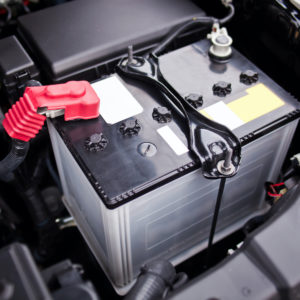Electric vehicles (EVs) are rightly praised for their efficiency, performance, and zero-emissions goodness but remain plagued by a few key issues that must be solved before replacing the 140-year-old internal combustion engine. Despite how ubiquitous electric vehicles may be in the media, they only accounted for about 4% of new U.S. car sales in 2021. How the following EV flaws are addressed will determine the platform’s future, and how soon you might be saying goodbye to fossil fuels forever.
Batteries
Arguably the biggest elephant in the room: electric car batteries’ environmental impact. Lithium-ion batteries used to power EVs are potent but have a less-than-clean entry into the world. Mining the raw materials needed (think lithium, cobalt, and nickel) is a dirty job that raises major environmental and safety concerns (think child labor and health hazards). These rare earth materials come from aquifers deep below the earth’s surface and the mining process itself must be cleaned up if battery-powered cars are the new norm.

Revised battery designs will play an equally, if not more, important role than mining in the progress of EVs. Eliminating temperature-sensitive elements such as cobalt will increase safety and reduce the risk of fire. EVs have a much lower risk of fire than gas-powered vehicles, but battery fires are usually difficult to quell as we’ve recently seen on the Felicity Ace ship that caught fire with over 4,000 Volkswagen vehicles aboard—many of which were electric.
Although electric vehicles have far fewer moving parts than their traditional counterparts, all mechanical components have a finite service life, and some are longer than others. Most current battery packs are fused together as a single unit, making them unserviceable. Switching to a modular design would allow individual elements such as cathodes, anodes, and cooling systems to be replaced separately. This, in turn, drastically extends the life of a battery.
Recycling

Batteries eventually require replacement, and when they no longer hold a charge, lithium ion battery recycling enters the picture as a logical choice. However logical it may be, only a small percentage of these lithium-ion batteries are being recycled. Some estimates predict over 12-million tons of lithium-ion batteries are set to be retired between now and 2030. End-of-life, and new “second-life” solutions need to be implemented across a larger percentage of batteries to minimize harmful waste.
Countries in Asia notoriously do a better job of recycling these batteries, whereas North America lags behind.
Electric Motors
Batteries and charging concerns are amongst the most discussed topics, but electric motors themselves must not be forgotten. IDTechEx, an independent market research firm focused on emerging technologies, predicts that over 100 million electric motors will be required annually by 2032 to meet EV demand. New EV technology such as axial flux motors will offer space-saving and power benefits over existing “radial flux” units, while being more power-dense.

If the auto industry can agree on one thing, it’s that EVs are the future. The hurdles that face battery technology are well-documented, but there’s an optimistic attitude around EVs that tells us these problems are bound to be solved. If you can hold off and bear the high price of gas for a while longer, all signs point to leaner, meaner, and greener future electric cars just around the corner.
Any information provided on this Website is for informational purposes only and is not intended to replace consultation with a professional mechanic. The accuracy and timeliness of the information may change from the time of publication.














